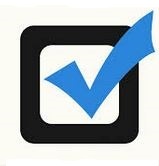Schedule F, Farms
Tax Preparation Checklist
 Good
Farm Business record keeping is more critical than ever with the size and scope of many
growing farm businesses today.
Schedule F
is used to report profit and loss.
Good
Farm Business record keeping is more critical than ever with the size and scope of many
growing farm businesses today.
Schedule F
is used to report profit and loss.
Well documented farm records help farmers to make critical financial management decisions.
Keeping your farming business records organized for critical evaluation will help you determine your resource use and efficiency for profit and loss evaluation. This can also help you evaluate the tax benefits that may apply to you and your business. See additional support Understanding Farm Records.
The Farmer's Tax Guide: IRS Publication 225, explains federal tax laws and how they apply to you and your farming business.
Year-End Farm Record-Keeping Checklist
Farm record keeping for income tax management will help you determine potential tax liability and allow you to perform accurate tax planning prior to the end of your fiscal calendar year. This also allows you to prepare the proper paperwork to obtain tax credits available for lowering your tax bill.
Farm Business Schedule F Checklist
click to print Farm Business tax preparation checklist
 Farming
Income
Farming
Income
- Sale of livestock and other products bought for resale
- Sale of livestock and other products you raised
- Co-op distributions from Form 1099-PATR
- Monies received from Federal agencies
- Other Income
 Farming
Expenses
Farming
Expenses
- Cost basis for livestock and other products sold
- Categorized ordinary and necessary farming expenses
Documentation for assets and equipment purchased during the tax year for specific use in your farming business, including:
- Dates you purchase your items
- Dates you put items into service on your farm
- Full description of items purchased
- Percentage of use for business if used elsewhere as well
- Sales price of items if they were resold during the tax year
Documentation for the sale, trade or removal from business operation for assets and equipment, including:
- Real property
- Tools and equipment
- Farming vehicles including
- Description of new vehicles
- Total (Actual) miles for the year
- Total (Actual) farm use mileage
You must keep accurate records to support farm vehicle mileage and use. This should include a log book and calendar for vehicle use.
Farm documentation for a good record keeping system will include:
- Business accounts for investing, checking, savings, and credit cards
- Income and expense records for cash business transactions
- An annual asset inventory and valuation for fiscal year end totals
- A depreciation schedule for business assets including
- asset cost basis
- current cost valuation
- market valuation.
- A cost and balance sheet for market valuation that summarizes assets and liabilities related to your farm.
- An income and expense statement listing all receipts, expenses, open accounts receivable and accounts payable.
- A cash flow statement showing the source of cash inflow into the business, and cash outflows going out of the business.
TaxPreparationChecklist.Com
Farm Enterprise Accounting & Management
Keeping good enterprise records showing receipts and expenses for each farming enterprise individually with profitability analysis is invaluable. This will help you insure you are making sound investment decisions.
 Accrual
Income Statement
Accrual
Income Statement
An accrual income statement is a helpful tool that measures the business profitability for the tax year.
 Accrual
Adjusted Income Statement
Accrual
Adjusted Income Statement
An accrual adjusted income statement combines the annual beginning cash basis farm records with the current inventories from the balance sheets (comparing the beginning and end of the year valuation) to give a true measure of the farms overall profitability.
 Balance
Sheet
Balance
Sheet
The balance sheet is used to measure the farmers / operator’s level of equity or ownership in the business.
These statements should be prepared annually using the same time period from year to
year. Income statements typically cover a time period from January 1st through December
31st, whereas a balance sheet should be prepared as of year end or December 31st.
Tax management laws like Section
179 for depreciation deductions can help farmers ease the tax burden now, but may significantly
increase future taxes for qualifying property.

